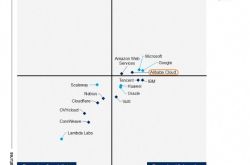[Focus] Surge in Computing Power Demand Sparks Policy Push for Reconfigurable Neuromorphic Component Development in China
![]() 04/23 2025
04/23 2025
![]() 564
564
Reconfigurable, multifunctional neuromorphic devices offer advanced capabilities to construct more intricate and efficient neural network architectures, positioning them as a focal point of research.
Neuromorphic components that are reconfigurable simulate the adaptability and variety of biological neurons. These components can dynamically alter their functions and behaviors, characterized by reconfigurability, high functional integration, and low power consumption. Their applications span neuromorphic computing systems, artificial intelligence, virtual reality, wearable devices, brain-computer interfaces, and beyond.
According to the "2025-2030 China Reconfigurable Neuromorphic Component Industry Market In-depth Research and Development Prospects Forecast Report" by the Sino Market Research Center, the escalating demand for computing power in sectors like big data, artificial intelligence, and the Internet of Things (IoT) has spurred a surge in hardware requirements. Traditional integrated circuits face physical constraints, with their efficiency and power consumption gradually falling short of these demands. Neuromorphic computing, which mimics the neural computation architecture of the human brain, transcends the von Neumann architecture and boasts high-efficiency computing power, with neurons serving as its fundamental units. Reconfigurable, multifunctional neuromorphic devices can achieve more sophisticated and efficient neural network architectures, making them a pivotal area of research.
Human brain neurons comprise a cell body and processes, including dendrites and axons. During operation, dendrites receive impulses from other neurons, transmit them to the cell body for processing, generate electrical pulse signals, and send them to the axon. The axon terminal then releases neurotransmitters to the dendrites of the next neuron. Reconfigurable neuromorphic components replicate this process, utilizing memristors to emit pulses, electrochemical transistors for precise functional control, and device outputs to transmit signals to the next device.
The Chinese government places significant emphasis on the development of high-tech industries, which necessitate robust computing power. Consequently, research into reconfigurable neuromorphic components has garnered attention. In August 2024, the Ministry of Industry and Information Technology issued guidelines for the 2024 annual projects under 16 key special projects, including the National Key Research and Development Plan for "High-Performance Manufacturing Technology and Major Equipment." Within the realm of high-end functional and intelligent material smart biomimetic metamaterials, research on reconfigurable neuromorphic components based on quantum conductance heterojunction materials was included.
Industry analysts at Sino Market Research note a steady increase in research outcomes related to reconfigurable neuromorphic components in China. In January 2024, a team from Tsinghua University introduced a graphene transistor device regulated by hydrogen ions, affirming its potential in neuromorphic computing. The results were published in "Nano Letters." In September 2024, a team from The Hong Kong Polytechnic University demonstrated a reconfigurable neuromorphic device based on bipolar tungsten diselenide (WSe2) and polyvinylidene fluoride-trifluoroethylene (P(VDF-TrFE)) ferroelectric copolymer. The findings were published in "ACS Nano." In February 2025, Zhejiang University and Westlake University developed a novel bionic neuron leveraging the efficient pulse generation of MOTT memristors and the precise state control of ECRAM. The results were published in "Science Advances."







